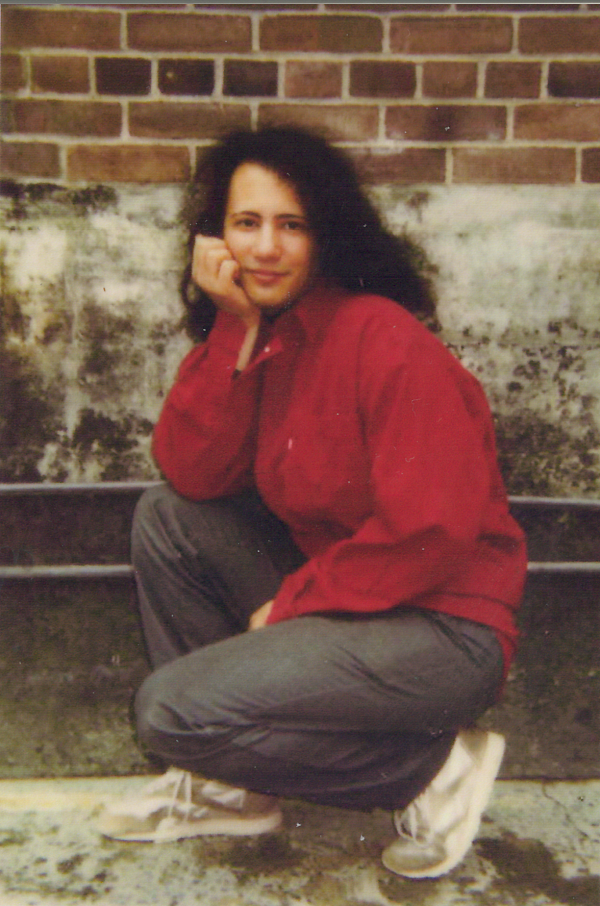In what may be the most extensive entry ever submitted to our blog, Jessica – an incarcerated trans woman – attempts to answer the question, “What is life like in prison?” She shares with us an entry that is chock-full of thoughts and stories, drawing from decades of personal experience. This is the first part of her series.
Warning: The following letter describes the injustices of the prison-industrial complex. Proceed with caution if you may be triggered by this topic.
“Playground Rules,”
by Jessica Brooks.

Jessica Brooks
What is life like in prison?
My name is Jessica Brooks. I am a 45-year old, Caucasian, lesbian, transgender woman. I offer these aspects of my identity because they are relevant. I have been incarcerated in the state of New York since 1989, so I speak from experience when I discuss prison, and those defining personal characteristics are relevant because they give me a unique perspective of my environment that none of my fellow prisoners have.
So, what is life like in prison? There is no simple answer. If I asked you what life is like in society, how would you answer? The potential descriptions are endless because life is too grand and society offers too many possibilities.
Prison is like a small town, its population a micro society, and their lives are nearly as varied as the free world outside. Thus, no simple answer can come even close to explaining prison, but there are some aspects of life in prison that can be illuminated by analyzing certain aspects of the people and their psychology.
One such aspect, the focus of this article, is classism, an attribute found not just in the people in prison but in all society as well. In fact, it is unlikely that anyone hasn’t experienced it in one way or another. It is a consequential aspect of civilization that begins the moment we are born and endures until death. It defines most of us as individuals as well as our place in the world.
Let us first take a step back, to clarify a truth that is quite simple that many people often forget: Life goes on! Free society, the majority of whom are honest, law-abiding citizens with no experience with the criminal justice system, are often guilty of the old adage about locking up a criminal and throwing away the key. Once that person goes to prison, they disappear from the public eye and – out of sight, out of mind – people forget and move on with their own lives. Thereafter, any infrequent thought about that absent person results in an imagined prison cell with its occupant staring out from the barred front wall. Metaphorically, that person is considered no more than an old, defective appliance, shelved in a huge, unseen, long-term warehouse. But that device, no matter how defective, no matter how long they are shelved, is a living human being. For him, his life changes dramatically if not completely, but his life goes on!
Another point to consider is the environment. In its purest form, prison is merely a building or, rather, a compound consisting of many buildings inside an immense wall, but it is just a place, an environment. The nature and quality of an environment are determined by the nature and quality of its occupants. The nicest place in the world can feel like the worst if the people who occupy it are bad-natured. Similarly, a horrid environment can be a great, happy place if there are good people in it.
Prison, expectedly, is filled with some of the most dangerous, violent, sociopathic, and mentally sick people, which makes it a predominantly dangerous, violent, anti-social, and twisted environment. There are, of course, good people in prison as well: Those who are innocent of their crime; those who broke a law out of necessity or a lapse in judgment; good people who get caught up in a bad crowd doing bad things, or those who merely made mistakes. They are, however, the minority in prison, and the majority have the greater influence on the environment, making it mostly a bad place.
It is not the danger, violence and sickness that reveals what life in prison is like, only what the environment and its people are like. On the other hand, classism reveals a little about prison life.
To understand classism, let’s go back even further, right to its beginnings.
Read more about Jessica’s early experiences with classism in the next post of this series! (Coming soon)


[…] This is the second part of a multi-part series. Click here to read Part 1. […]
[…] is the third part of a multi-part series. Read Part 1, Read Part […]
[…] is the third part of a multi-part series. Read Part 1, Read Part 2, Read Part […]